Rising interest rates had apparently not heavily affected prepayment activity and thus, by inference, refinancing through July Lender Processing Services (LPS) said today. The company's Mortgage Monitor for the month found that, while loan origination volume had slowed slightly from May to June, activity overall remained strong.
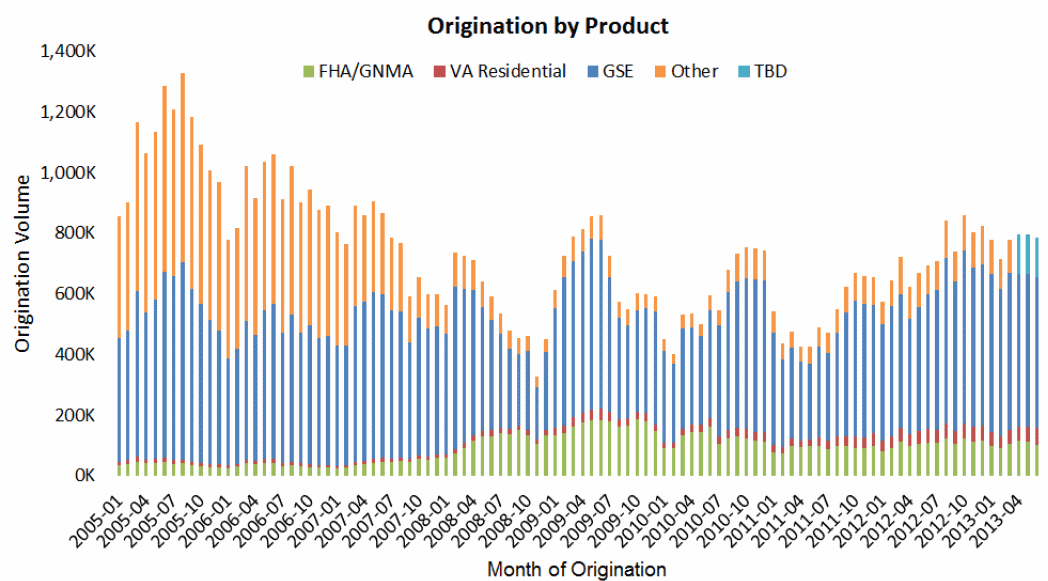
According to the company's Data & Analytics Senior Vice President Herb Blecher, prepayment activity (historically a good indicator of mortgage refinances) continues, as it has for some time, to largely drive origination volume. Prepayment speeds have been affected by interest rates which have risen sharply over the last couple of months, he said, "However, even with that increasing interest rate pressure, July's monthly prepayment rates are still about where they were this time last year, when rates were at historic lows. In fact, they are roughly at the same levels as the heights of the 'mini refinance booms' in 2010 -- when interest rates were comparable to where they are today -- and in 2009, when rates were even higher."
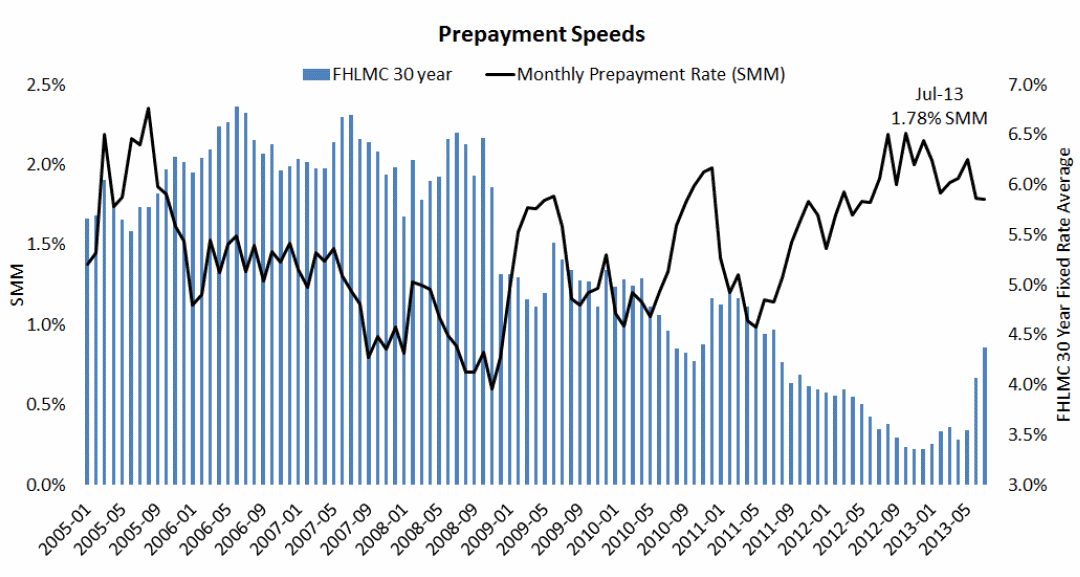
Blecher said that as rates continue to climb we can of course expect both prepayments and associated originations to decline. It is notable however, he said, that there was an increase in prepayment activity in July among mortgages with loan-to-value (LTV) ratios of 100 percent or more. This indicates continued refinancing through the Home Affordable Refinance Program (HARP) he said.
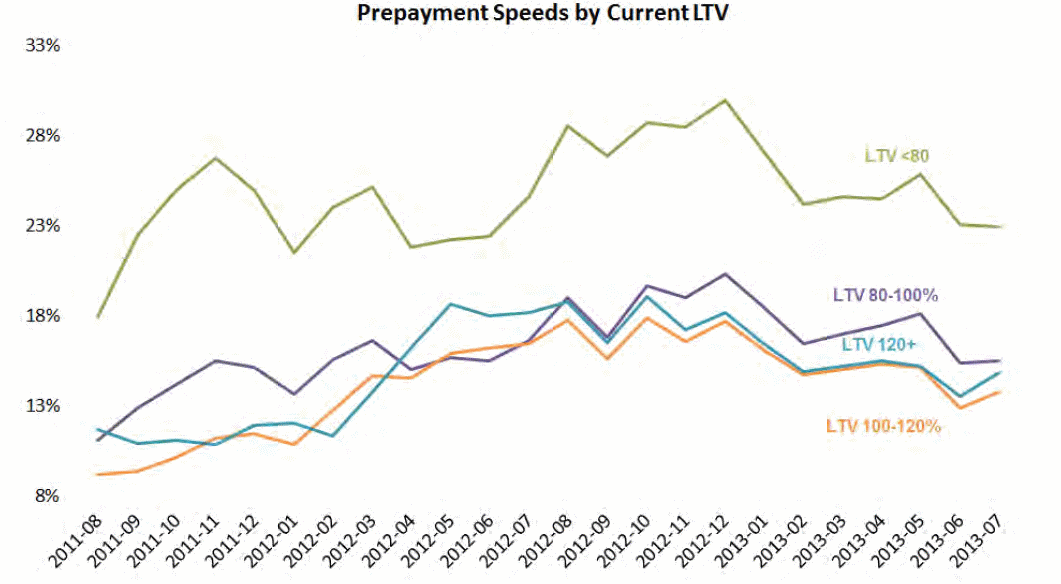
"With that in mind, we also looked at the delinquency rate for what are likely to be HARP loans 12 months after origination," Blecher continued. "We found that while delinquencies were higher than "traditional" (sub-80 percent LTV) GSE loans -- at approximately 1.2 percent -- this group is performing better than both pre-crisis GSE loans and post-crisis FHA loans (which both averaged 4 percent delinquency rates at 12 months of age).
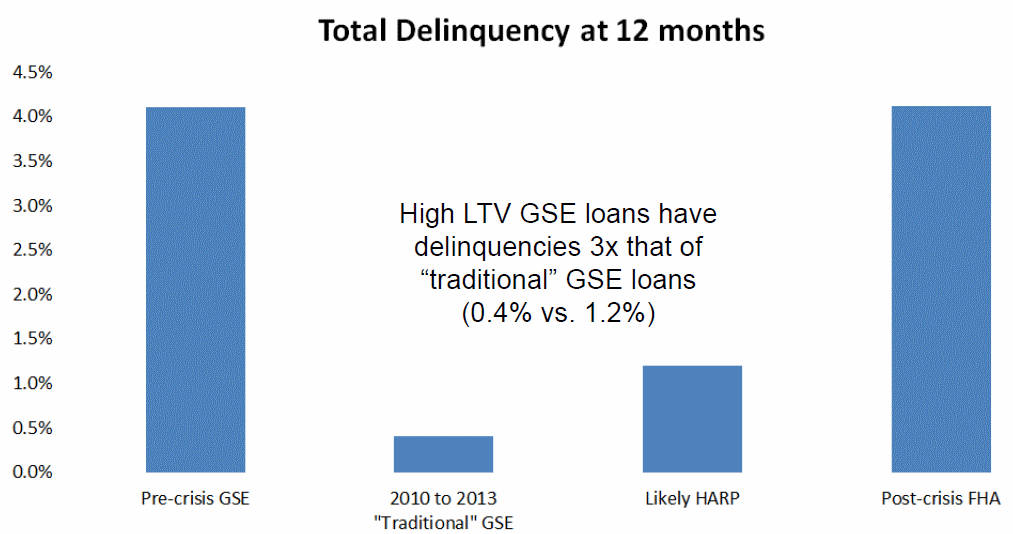
LPS data shows an overall strong downward trend in delinquencies and foreclosures nationwide. Foreclosure starts in particular have been improving and, so far this year, are at the lowest level since 2007. Almost 50 percent were repeat starts, indicating that fewer new loans are getting into difficulty and painting an even more positive picture than do the numbers alone.
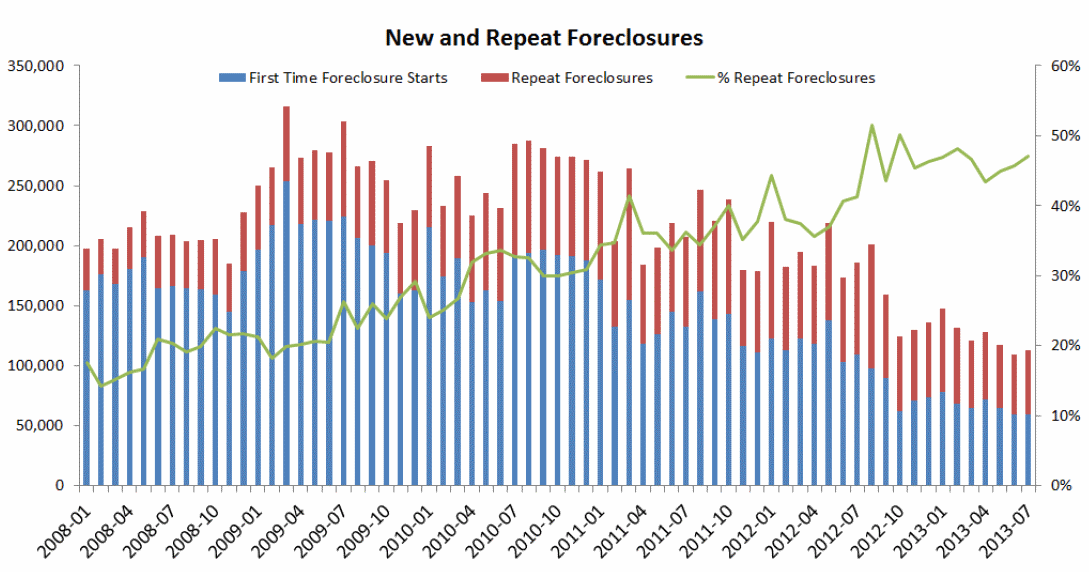
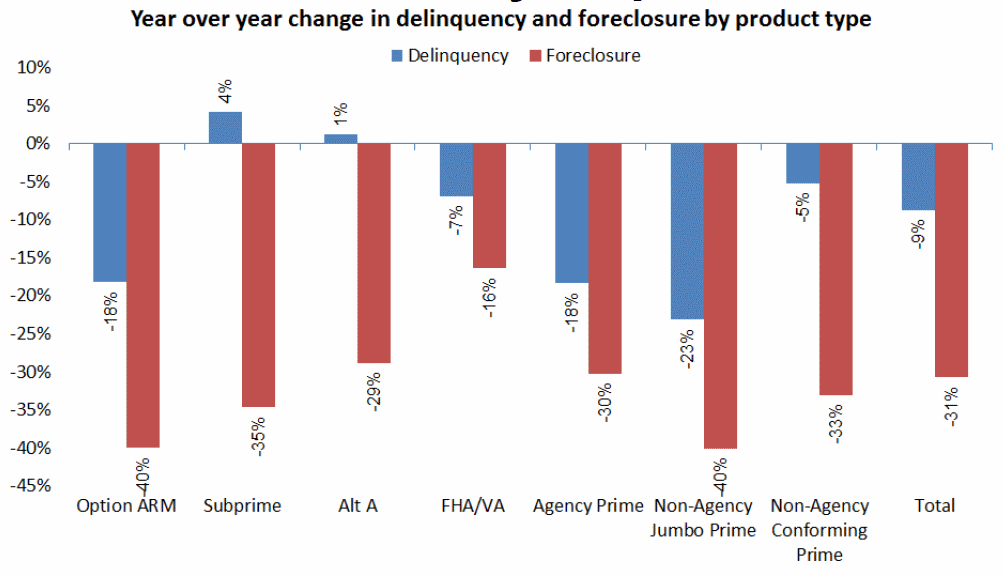
LPS used its residential transaction data to examine trends associated with distressed sales and found they were also on the decline. For the 12 months ending in June distressed sales, including owned real estate (ORE) and short sales were down nearly 30 percent from the 12 months that ended in June 2012 - from 650,000 to 463,000. Short sales in particular had declined significantly, down 60 percent from 104,000 in the 2011-2012 time period to 46,000 in 2012-2013.
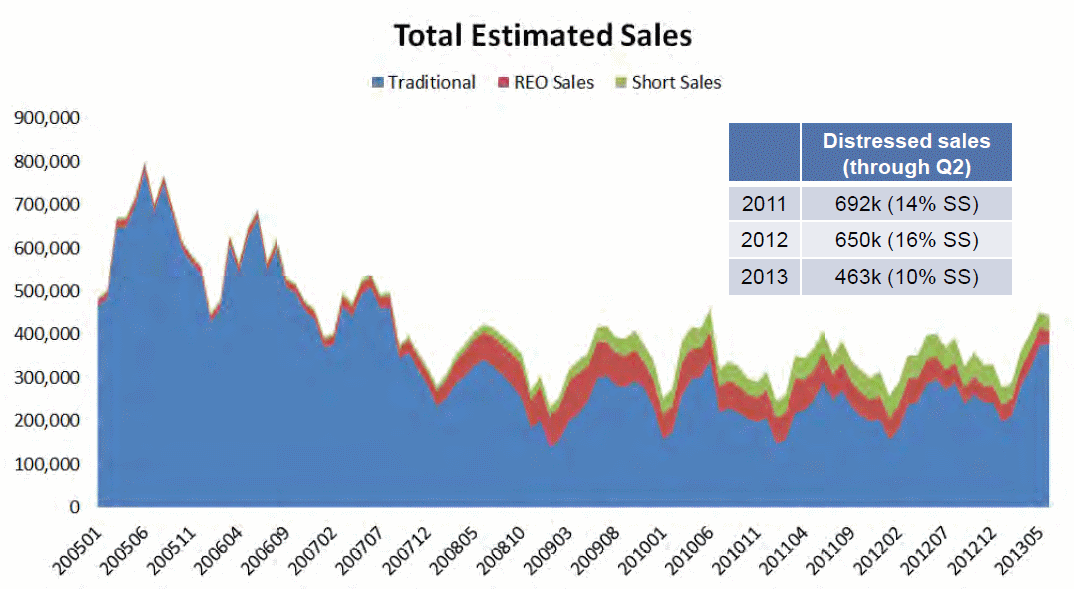
LPS data which was originally released in its "First Look" last month include a delinquency rate that is now at 6.41 percent, down 3.96 percent from June. The foreclosure presale inventory rate was 2.82 percent in July, down 3.46 percent.







